Muizz Street to Khan el-Khalili Walking Guide (& 14 Must-See Landmarks!)
Want to discover Islamic Civilization beyond the Cairo Citadel? It’s time to experience a walking tour along Muizz Street!
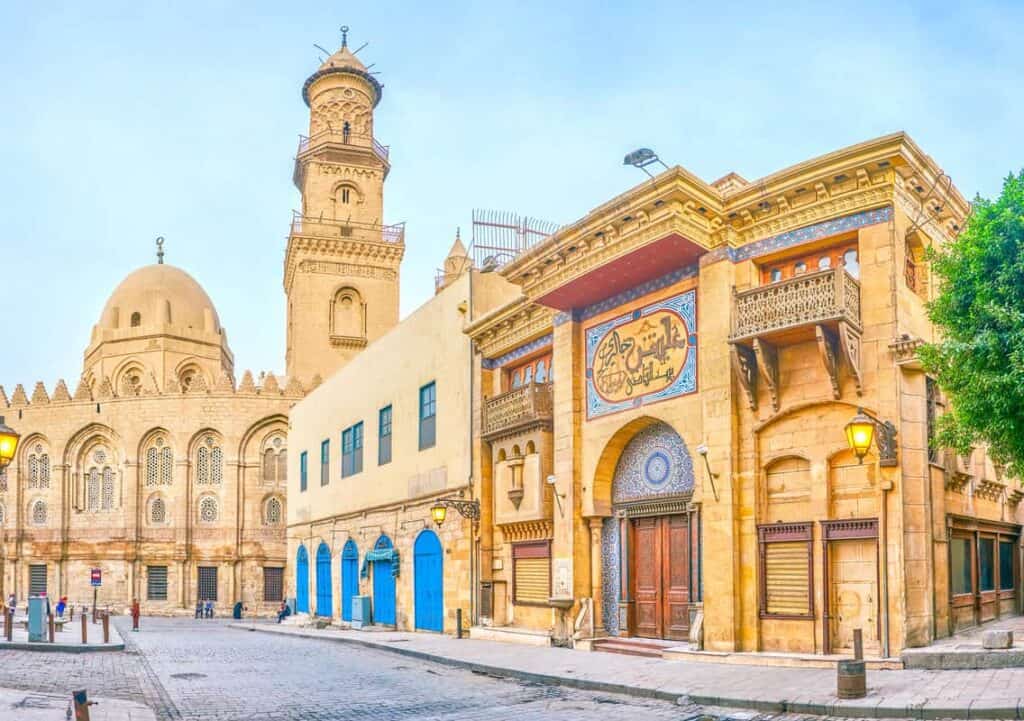
Today, this bustling street is still the heart of Islamic and Historic Cairo, Egypt.
This historical street begins from the stretches of northern gates of Cairo’s Old City walls (Bab al-Futuh & Bab al-Nasr) all the way south to Bab Zuwayla, passing by ancient alleys and unique streets like Khan al-Khalili and Qalawun Complex.
Disclaimer: Some of the links here are affiliate links. I receive a small commission AT NO EXTRA cost to you if you use the links. Hope you find this guide helpful!
[toc]
About Muizz Street
Muizz Street is a north-south street along with the walled city of Historic and Islamic Cairo.
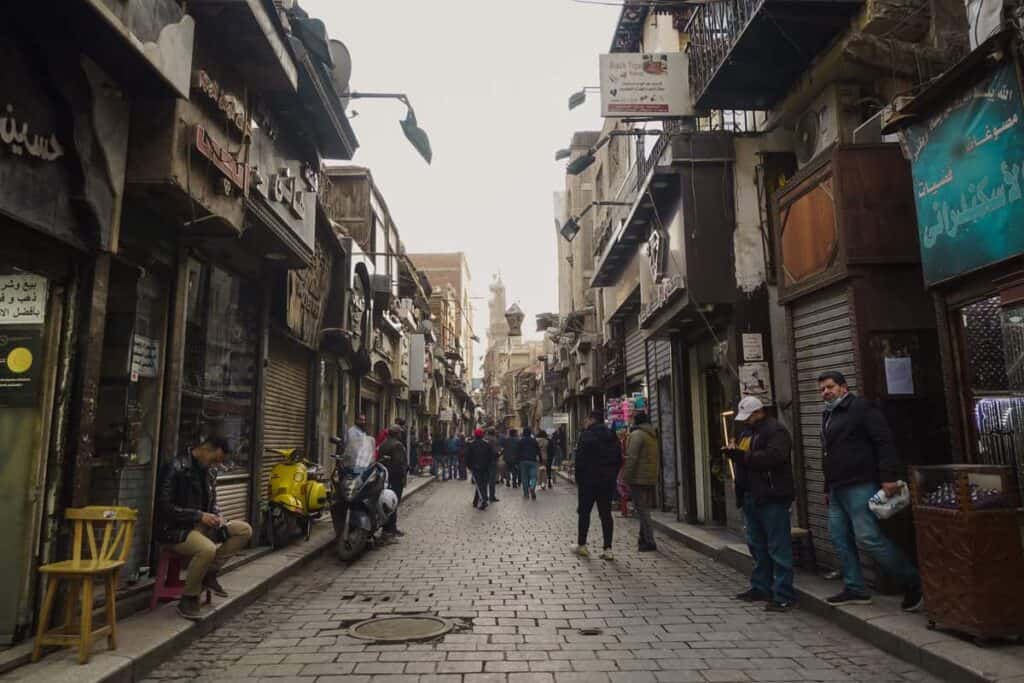
One of the main streets in Historic Cairo, walking along this street is like a stroll along with the open-air museum of Egypt! This history of this street goes back to the foundation of Cairo as a city!
As Cairo is known to be the “Capital of Culture in the Islamic World”, for its historic Islamic landmarks and mosques, it is only right for one to visit Muizz Street — a historic stretch of street that showcases ancient Islamic civilization that dates back to the 10th century of Fatimid dynasty.
Historic Cairo, an area covered by Muizz street, is also recognized by UNESCO as a World Cultural Heritage site in 1979 for its existence as “one of the world’s oldest Islamic cities.”
Muizz Street (Al-Muizz Al-Deen Allah Street) History
Al muizz street was named after the Fatimid Caliph who conquered Cairo in AD 969.
How old is Muizz street? The street is very old, with earliest history dating back to the 10th century.
While it is known that Muizz street’s history began with the Fatimid Cairo dynasty, ever since then, till today, the street has had a complex history.
The whole stretch host several historical buildings, monuments, palaces, and mosques of various dynasties that ruled Egypt from the Fatimid to Ayyubid, Mamluk, Ottoman, and all the way up to Muhammad Ali ruling.
Did you know? Muizz Street played a big role in laying down the foundations for modern Cairo to flourish.
Walking Tour Along Muizz Street – A Great #MuslimSoloTravel activity!
Walking along Muizz Street is like passing by a variety of Open Air museums of the Medieval Islamic Civilization era, and it makes a great Muslim Solo Travel activity!
Without further ado, here are some top things to see and do in Muizz Street, Cairo, Egypt.
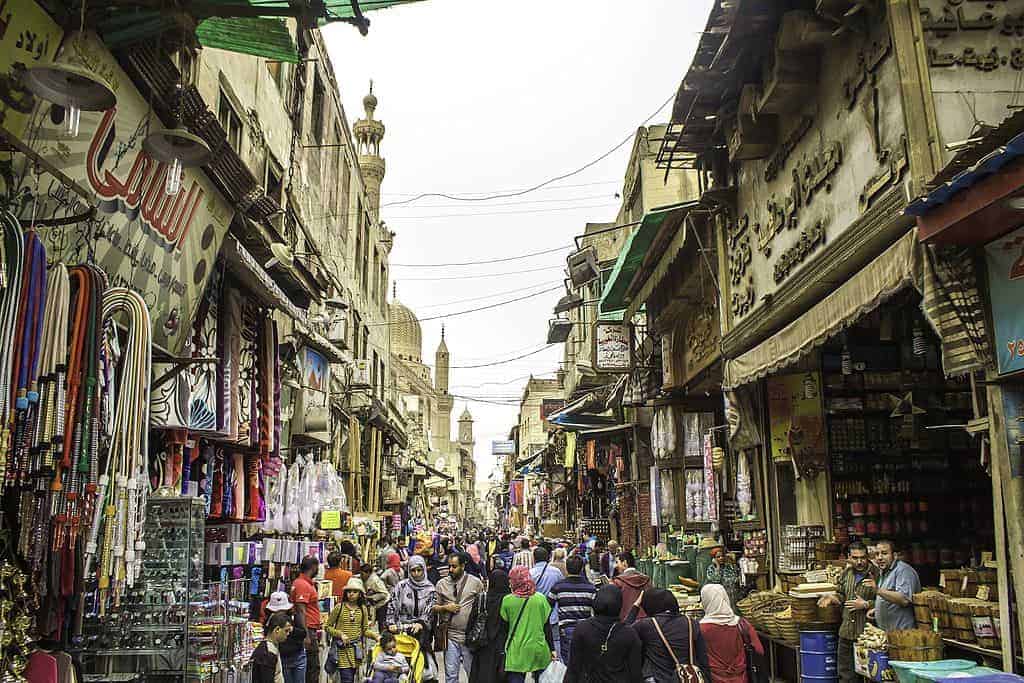
Top Things To See & Do in Muizz Street
Bab El Nasr – 11th-century gateway to the Old City
One of the gates of the Fatimid Northern wall is Bab Al-Nasr (also known as the Gate of Victory) which opens onto al-Gamaliya Street.
Like other ancient gates of the world, this gate acted as the Old City’s shield and, till today, is considered one of the last remaining Islamic monuments.
Pro-tip: Start your Muizz Street Walking journey from here or from Bab al Futuh
Bab al Futuh
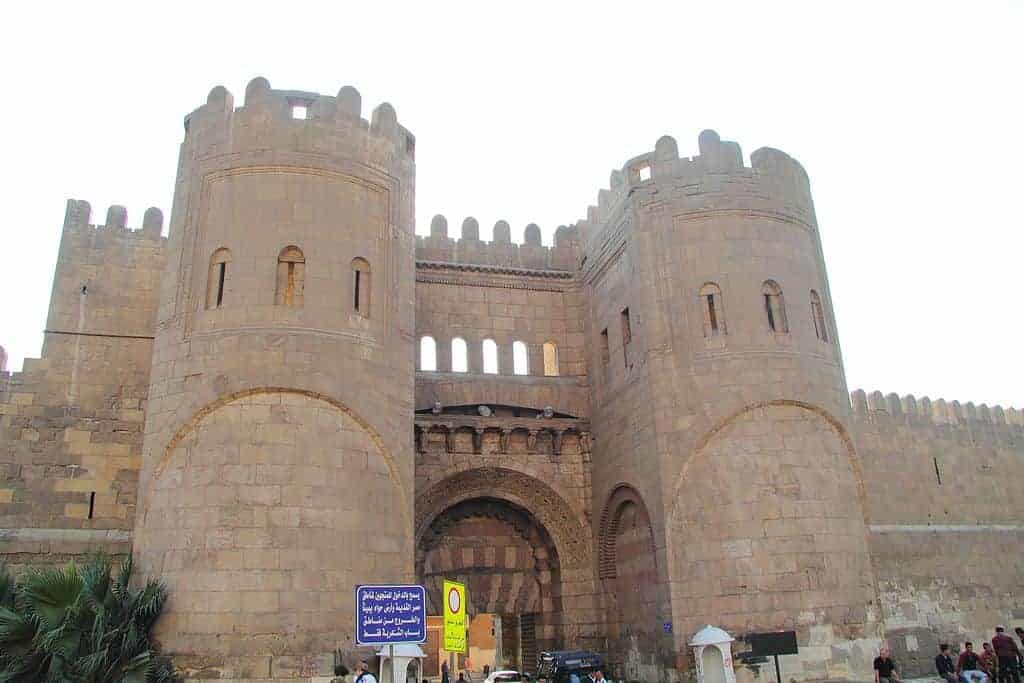
Stretching along Bab El Nasr is another mystical-looking gate called Bab al Futuh.
This fortification is an important representation of the outstanding representation of Islamic military architecture, a work that predates the Crusaders.
It has two large rounded towers, each serving a different purpose of defense and observation.
Did you know? In Medieval Islamic Cairo, the only way to enter the city of Old Cairo was through these tall gates!
Al-Hakim Mosque – 10th-century mosque landmark
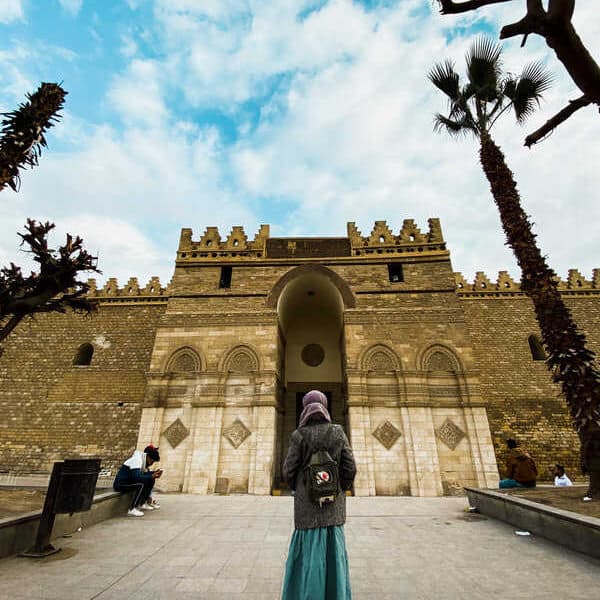
A few steps from Bab al Futuh is Al-Hakim Mosque, a mosque constructed initially with brick-and-stone facades and minarets reflecting the Fatimid style architecture.
Today, the white marble floor of this mosque is a result of the mosque’s modification.
Did you know? This is the second major Fatimid Mosque and the fourth most important religious edifice in Egypt!
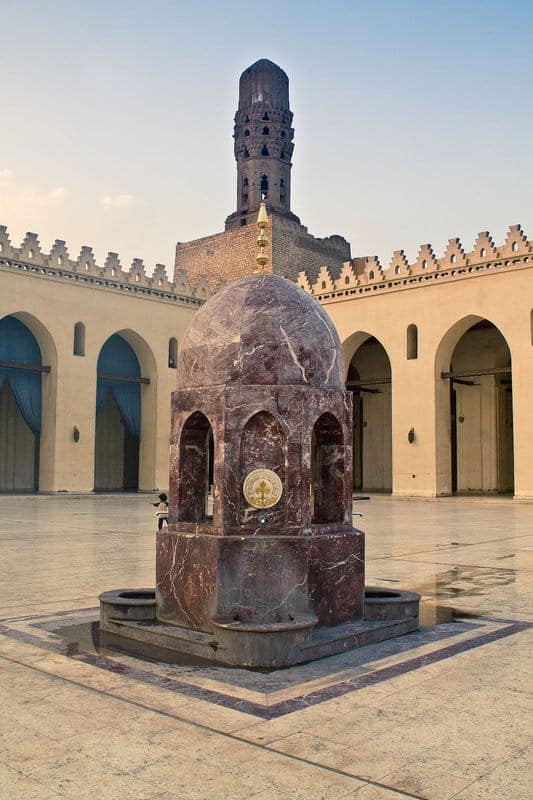
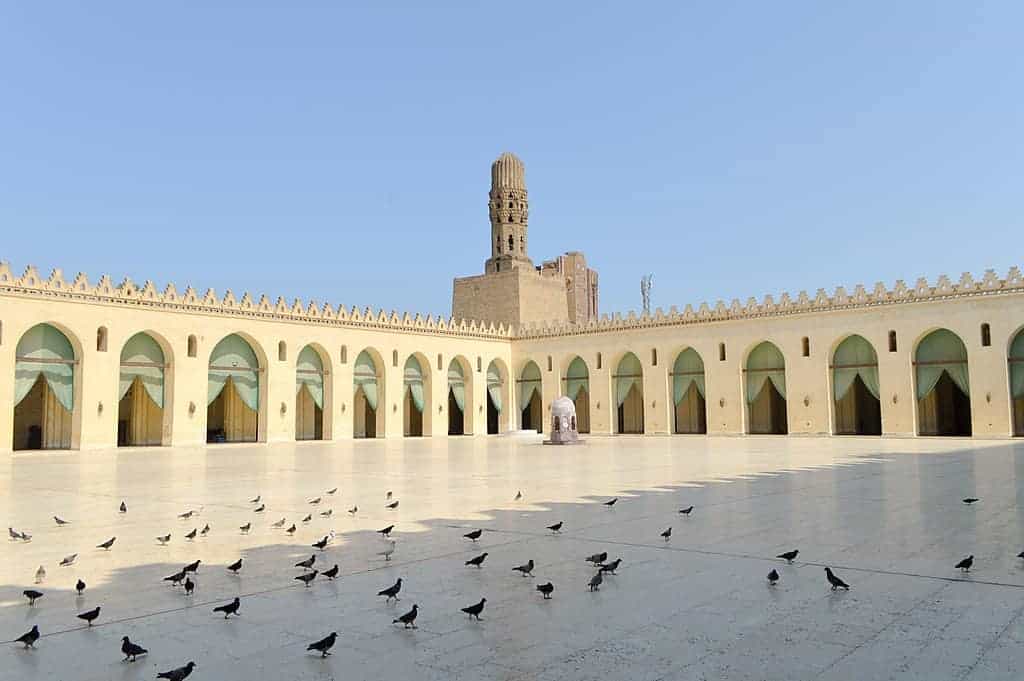
Bayt Al Suhaymi
Originally the residence of Shaykh Abd al-Wahhab al-Tablawi (scholar of al-Azhar University), this is a beautiful traditional Egyptian house with distinctive Cairo domestic architecture.
It is made of wood, marble, and tiles.
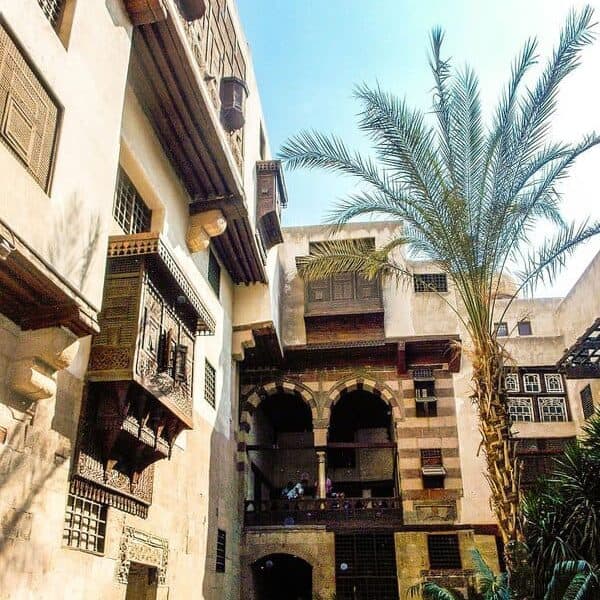
The highlight of this historical landmark is when daylight falls. You can see sun rays shining through the mashrabiyyas (wooden window lattices) from the resident’s courtyard garden.
Other than that, the wells, waterwheel, and birthing chairs are some unique elements of this house!
- Opening hours: 9:00 am – 5:00 pm daily
Al Aqmar Mosque
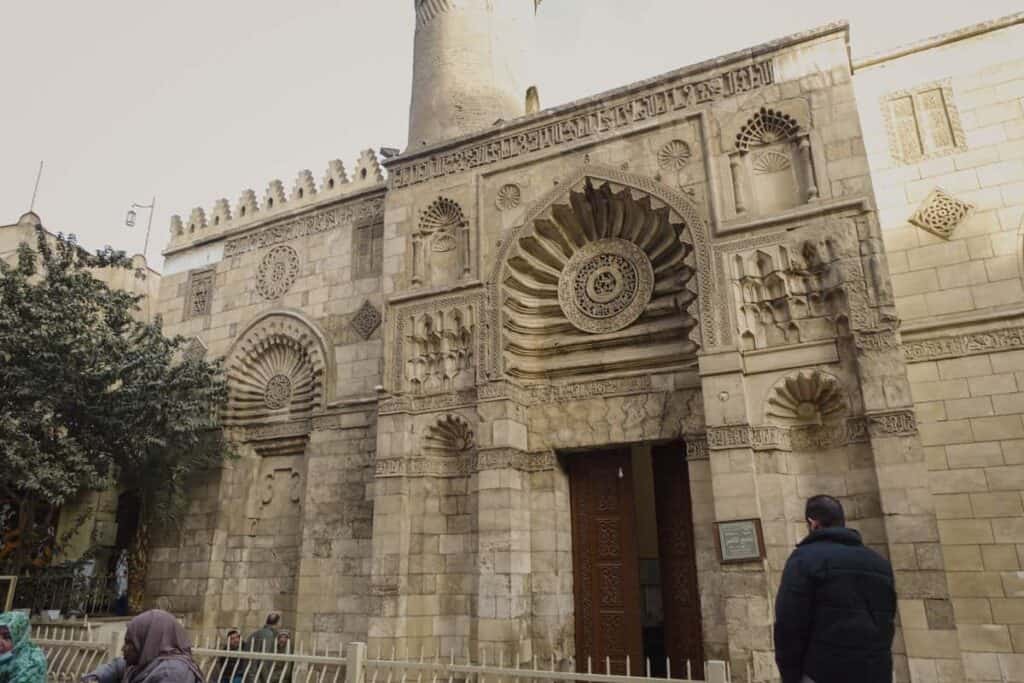
At the time of building, this mosque was located north of the extinct Eastern Fatimid Palace in Cairo.
Also known as the Moonlight Mosque, and one of the first hanging mosques in Old Cairo. Initially, it was built higher than the street level!
Not to miss out is Al Aqmar Mosque’s detailed stonework facade that shows decorative inscriptions and geometric motifs, with an interior structured to let the visitors feel the cool breeze upon entering!
Qalawun Complex
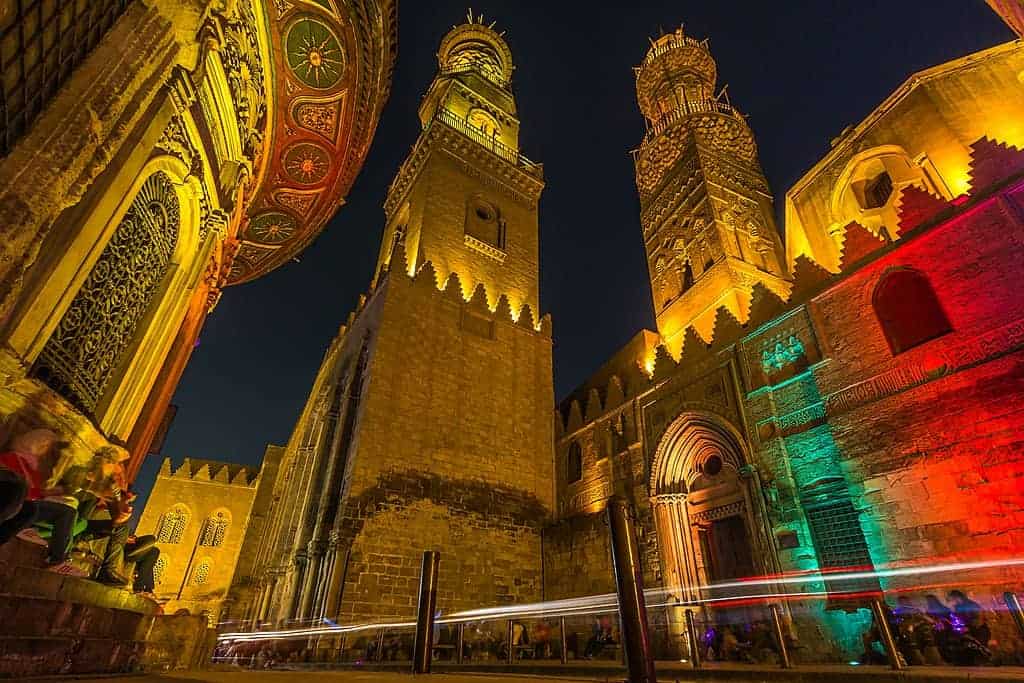
Located in al-Muizz li-Din Allah Street, this complex is known as the Complex of Sultan al-Mansur Qalawun, named after its patron Sultan al-Mansur Al-Qalawun.
This complex, located in Bayn Al Qasreen, is in the heart of Islamic Cairo. It houses a mosque, a madrasa, and a mausoleum showcases typical Mamluk architecture.
Did you know? Bayn Al Qasrayn means “Between Two Palaces”, which is named for two Fatimid Palaces that used to exist there in medieval Islamic Cairo during the 10th century?
The highlight monument of this complex is the Mosque and Madrasa of al-Nasir Muhammad Ibn Qalawun. They are characterized by beautiful stone facades, enchanting Andalusian decorations, and various inscriptions.
Mosque and Madrasa of al-Nasir Muhammad Ibn Qalawun Operating hours: 9:00 am – 5:00 pm daily
Beshtak Palace
Also known as Qasr Bashtak (Palace of Beshtak), this is a historic palace and museum in Historic and Islamic Cairo.
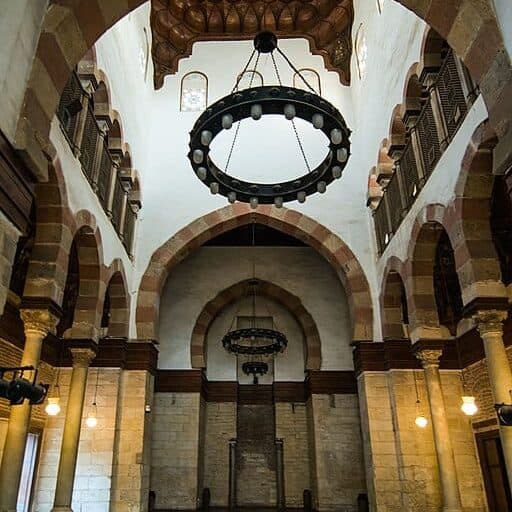
Built by a Mamluk Amir named Bashtak al-Nasiri in the 14th century, this place is located on the site of Fatimid Eastern Palace (al-Qasr al-Sharqi), today around Bayn al Qasrayn.
This palace is known for its stunning hall (Qa’a), Islamic architecture with majestic wooden ornaments, marble fountain, and mashrabiyya.
Sabil-Kuttab of Abdel Rahman Katkhuda

This is one of the most iconic buildings on Muizz Street!
Did you know that Sabil is an ablution fountain in Islamic architectural tradition?
Named in 1744 after its patron, a Mamluk amir (prince), this is a two-story square consisting of a fountain on the first level and a Madrasa (school), above it, dedicated to teaching the Holy Quran.
This Sabil displays a blend of various Mamluk and Ottoman architecture and decoration.
At night it is very well lit!
- Operating hours: 8:00 am – 4:00 pm (Sat – Thurs)
- Address: 2 Al Moez Ldin Allah Al Fatmi, El-Gamaleya, El Gamaliya, Cairo Governorate 4331403, Egypt
Al-Hussein Mosque
One of the holiest Islamic sites in all of Egypt is the Al Hussein Mosque.
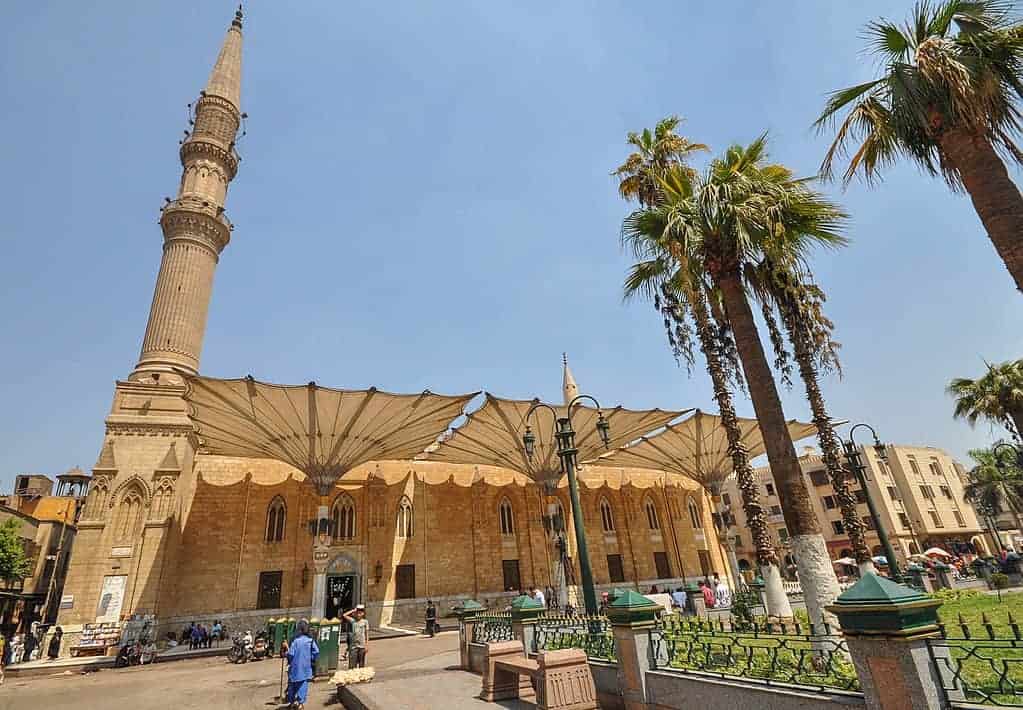
A mosque named after the grandson of the Prophet SAW, Hussein bin Ali, this mosque’s ancient heritage and religious significance make it a place that draws many visitors from around the world.
Around the mosque, you’ll see electronic-operated umbrellas reminiscent of the ones in Madinah Al Munawarah. They’re only opened when required!
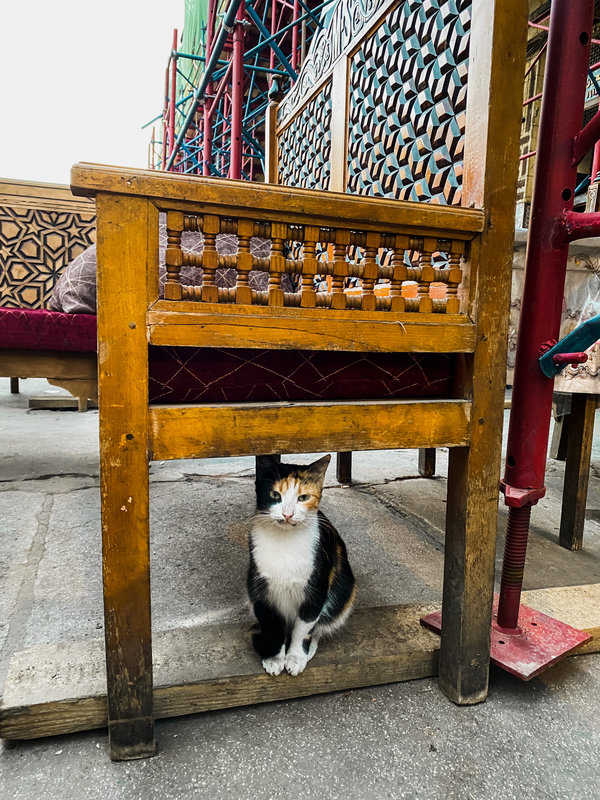
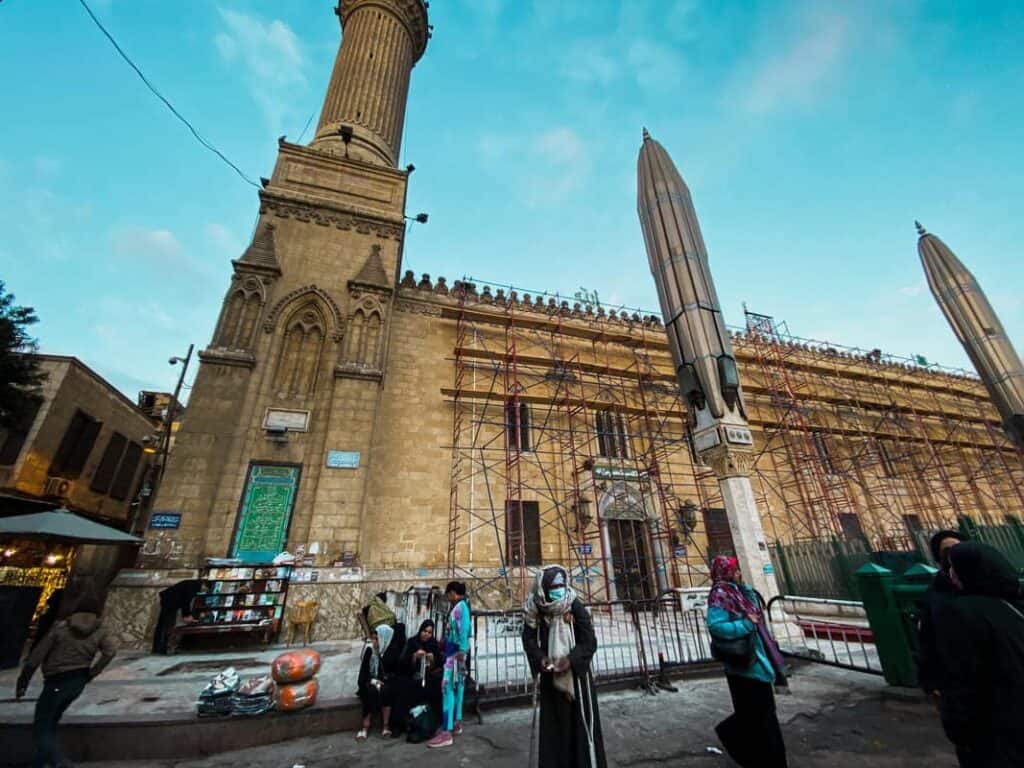
This mosque is also located in an area called Al-Hussein.
- Address: Hasan El-Adawy, El-Gamaleya, El Gamaliya, Cairo Governorate 4331330, Egypt
- Operating hours: 4:00 am – 10:00 pm daily
Khan el-Khalili
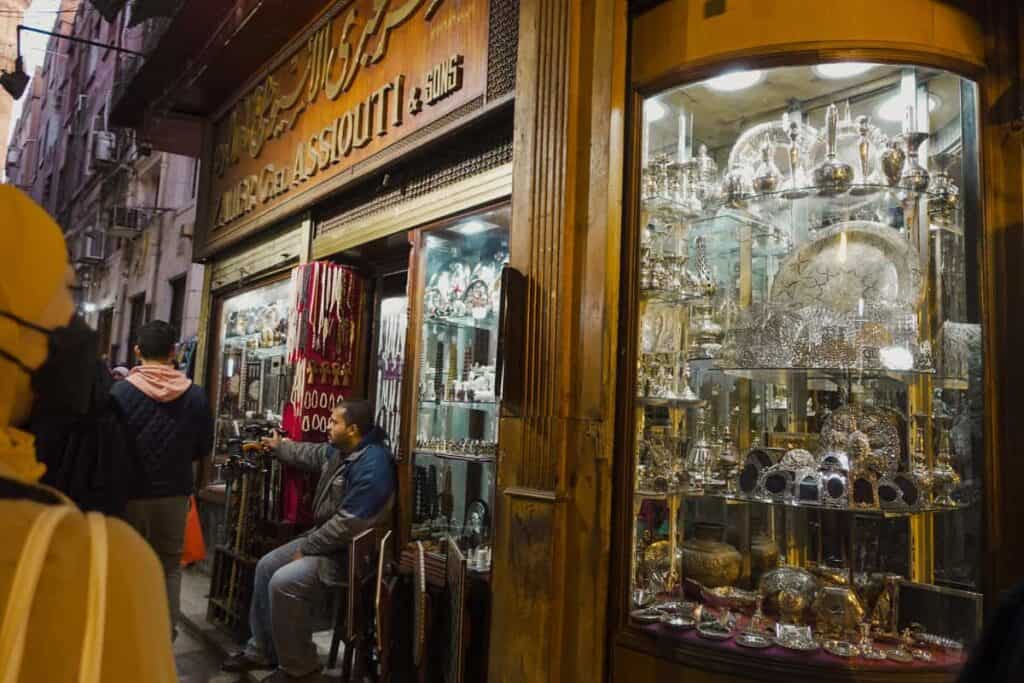
Nearby Hussein Mosque is one of the main attractions for visitors and Egyptians alike and is the city’s major open-air souk — Khan el Khalili!
Khan El-Khalili has been an important economic and cultural hub since the 14th century!
This is the best place to do all your souvenir shopping, and you will most probably get lost among the stained-glass lanterns, gold artifacts, handmade antiques, and colorful carpets!
Pro-tip: This place can be crowded and chaotic, so mind your belongings while you’re shopping for the best bargains! Haggling is almost always expected here.
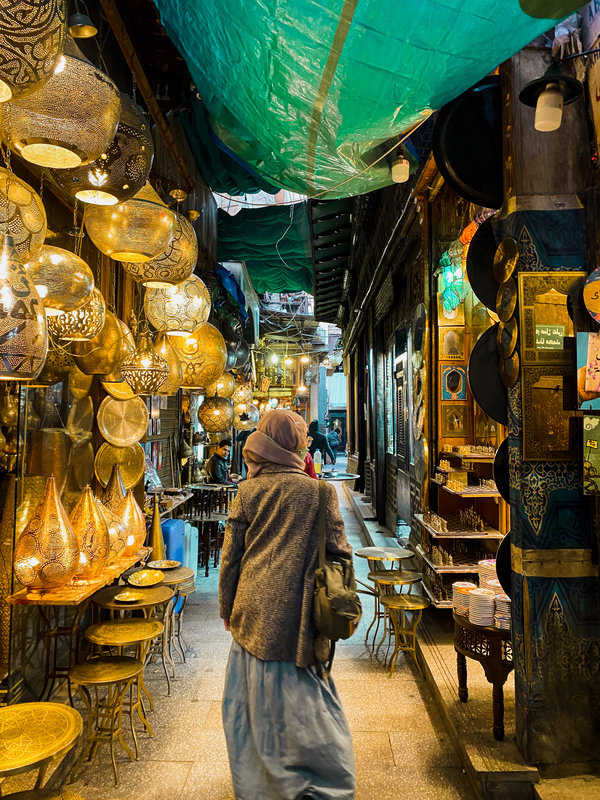
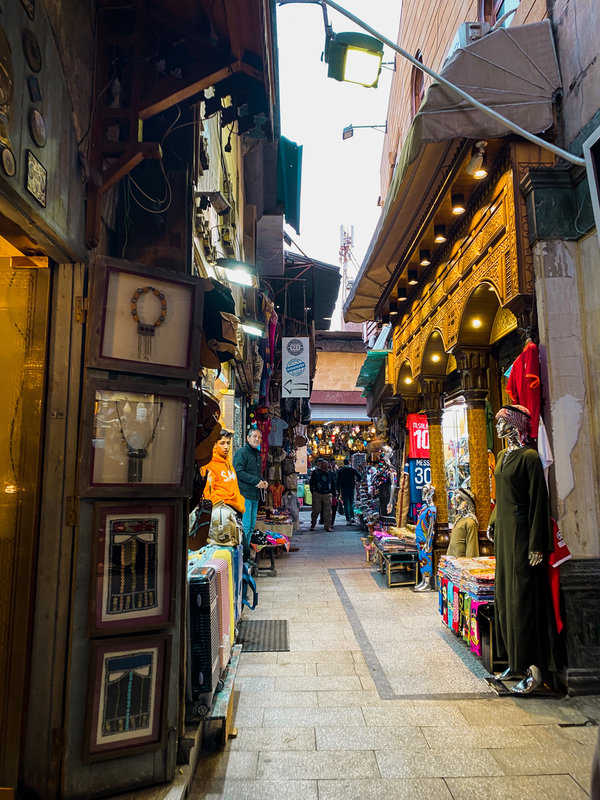
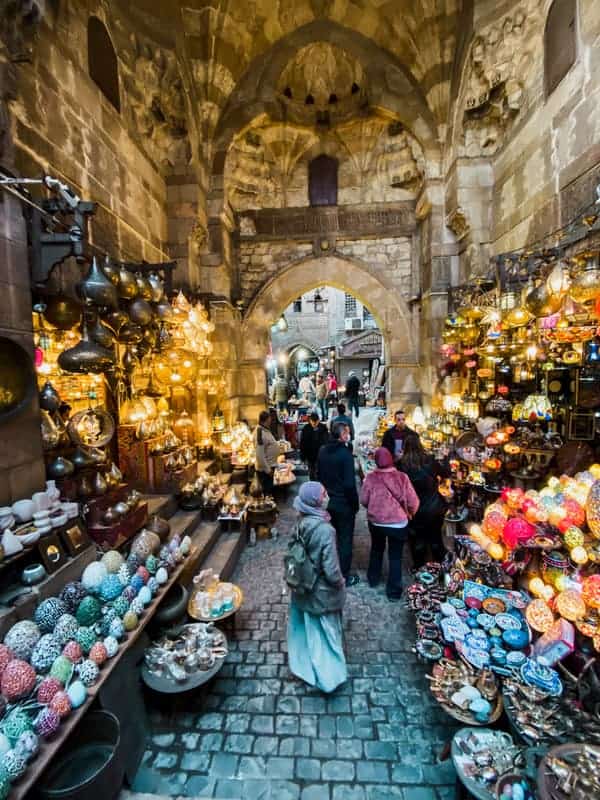
The best time to be here is in the evening when you can see the lanterns and lamps light up in a colorful spectacle. Speaking of which is a famous photo spot!
While you’re here, don’t forget to have a bite — lunch or dinner is excellent!
Al Azhar Mosque
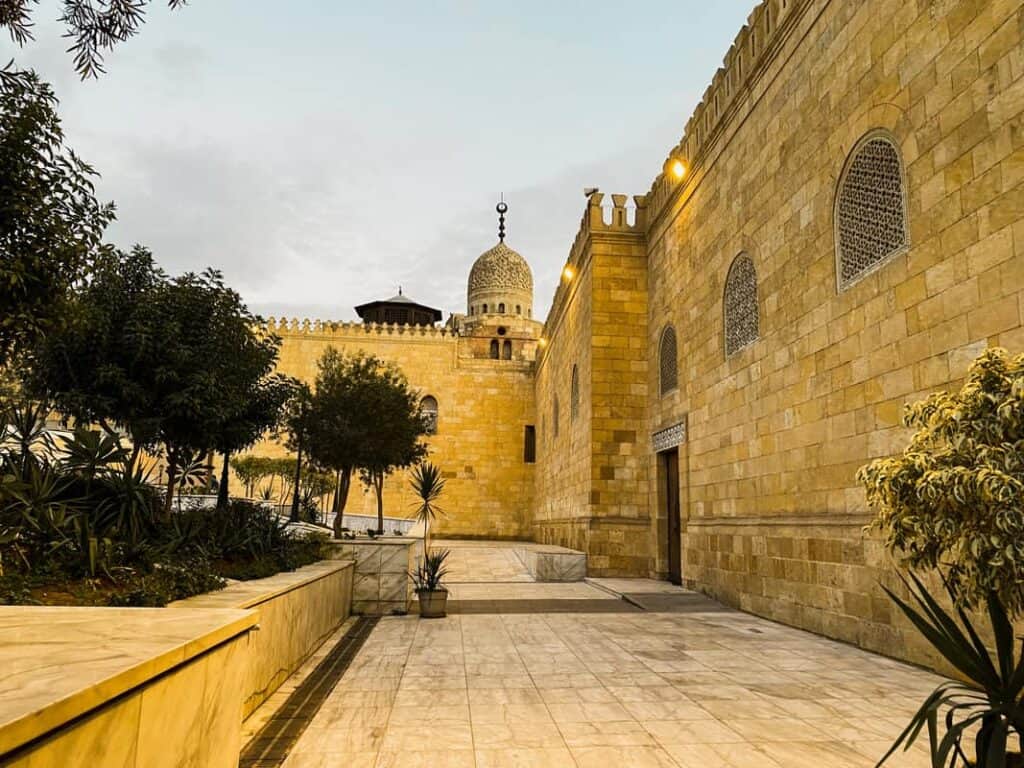
Built-in AD 970 as the first Fatimid mosque in Cairo, this mosque is one of the most (if not, the very) important in Egypt!
This mosque was also the earlier site of Al Azhar University, a reputable source of enlightenment and the largest religious institution in the entire Islamic world that still draws students from all over the Islamic world.
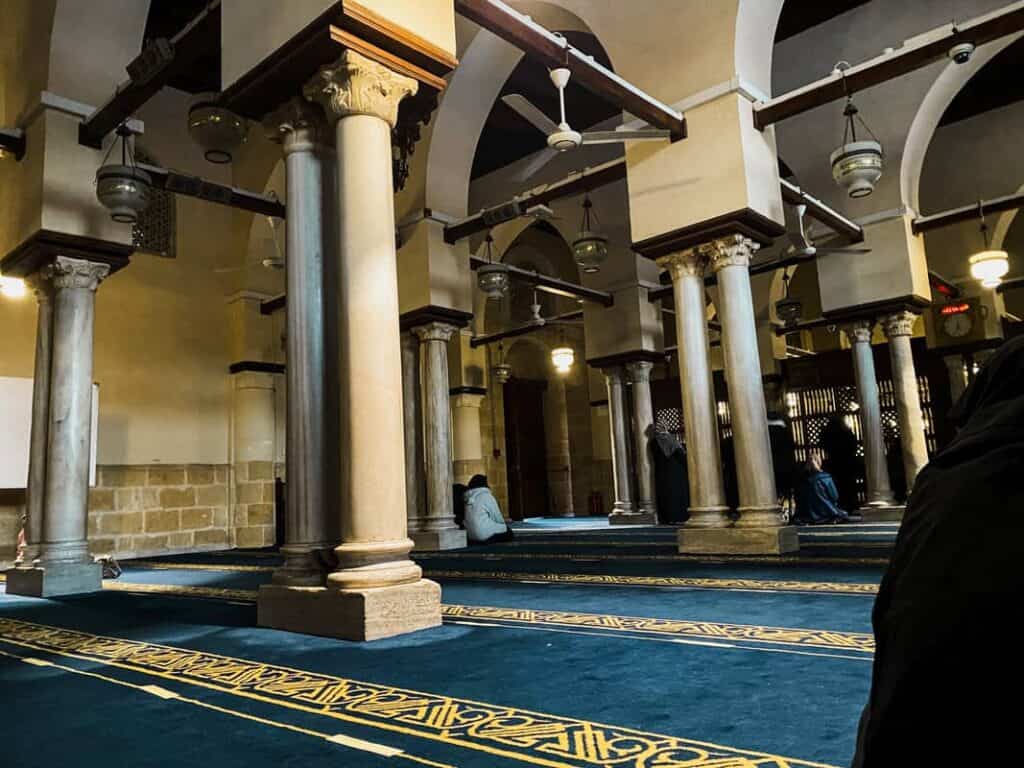
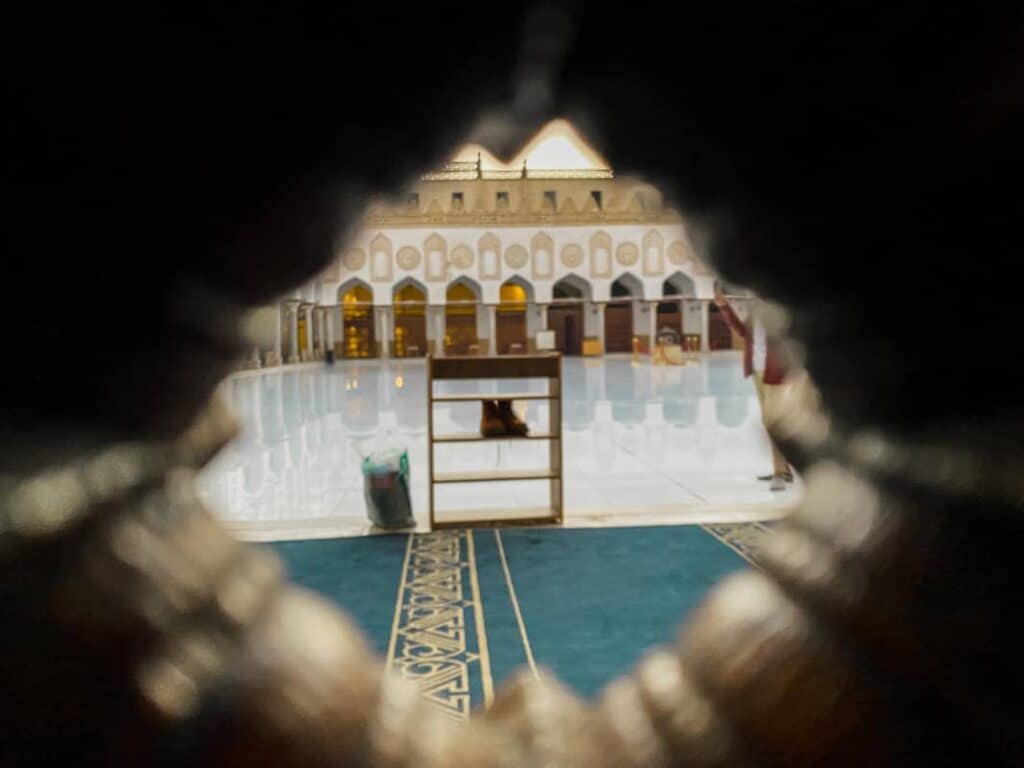
This mosque has a beautiful, large courtyard surrounded by white marble columns!
Pro-tip: To enter this mosque, you will have to go through x-ray scanners and metal detectors.
Address: El-Darb El-Ahmar, Cairo Governorate 4293024, Egypt (4-min walk from Khan el-Khalili)
Wekalet El-Ghouri Arts Center
The Tanoura dance (whirling dervishes) here is unlike those performed in the Bedouin desert experience.
Dubbed as the best Tannoura Show by many visitors, the show here is colorful and flashy in terms of both dance and music!
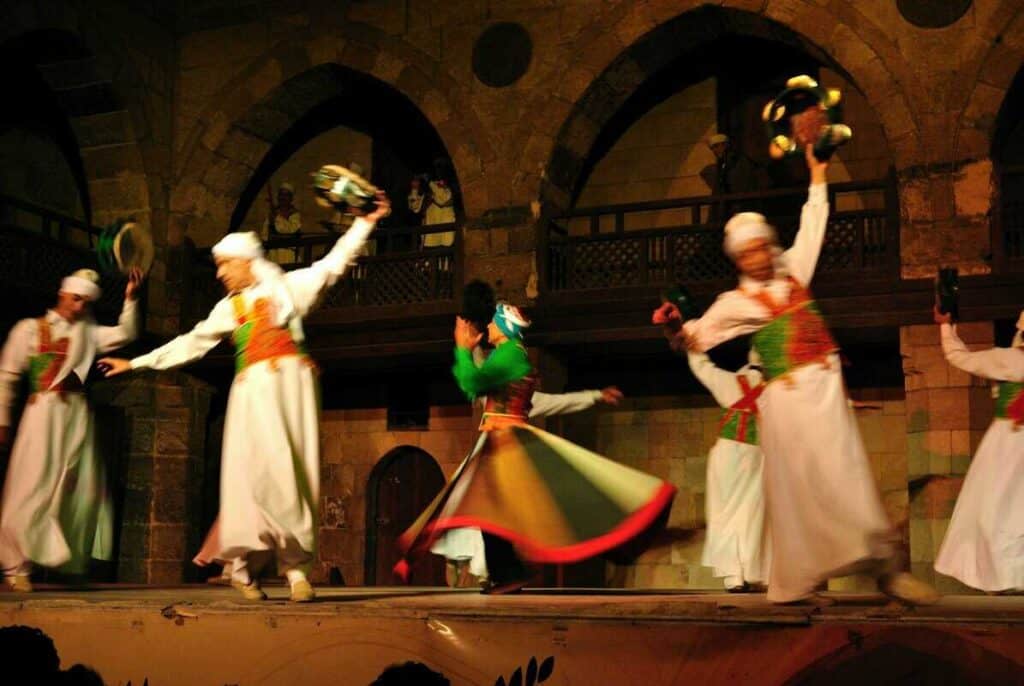
Pro-trip: Come by as early as 6:00-6:30 pm to get the best seats!
- Show times: Saturday, Monday, and Wednesday
- Ticket Price: 15 EGP for Egyptians and 85 EGP for foreigners.
- Address: 3 Mohamed Abdo Street, Off Al Azhar street, Al Dar Al Ahmar, Cairo Governorate 12411, Egypt
Mosque of Sultan Al Muayyad
Adjacent to Bab Zuwayla is this mosque, in short form, called Mu’ayyad Mosque, also known as the “Red Mosque.”
This mosque is named after the Mamluk sultan who ordered its construction in the 14th century.
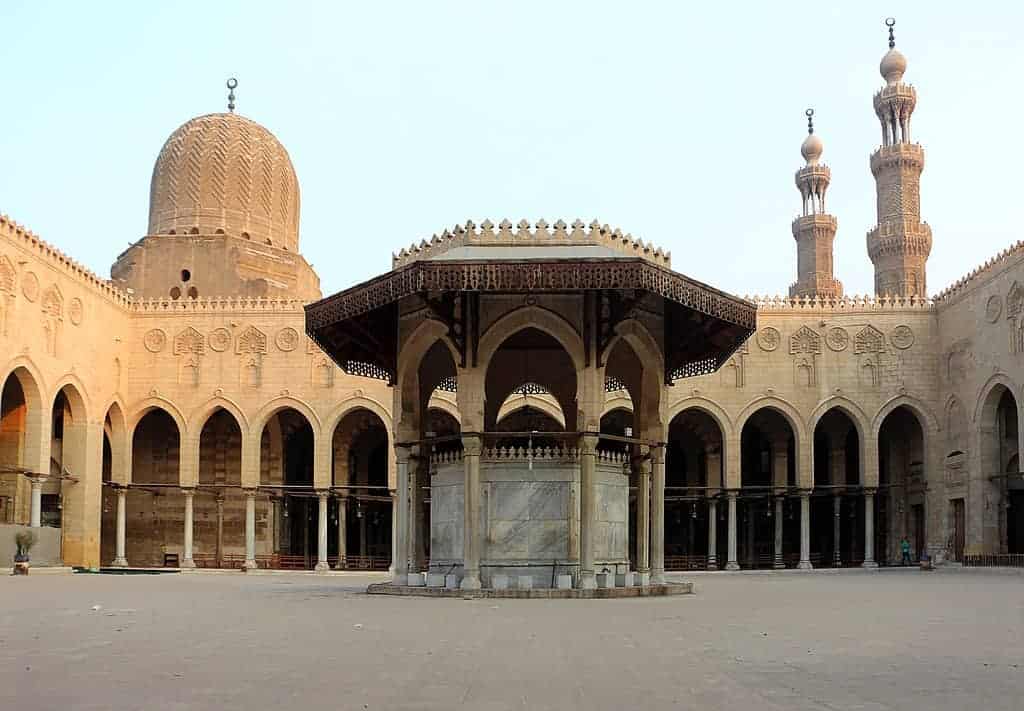
This Mamluk-structured mosque had an interesting history. Before it was built into a mosque, this used to be the site of Egypt’s mightiest prisons.
The minarets of this mosque provide one of the best views of Cairo City!
Address: 27V4+8XM، الاشرقيه، El-Darb El-Ahmar, Cairo Governorate 4291016, Egypt
Zuweila Gate
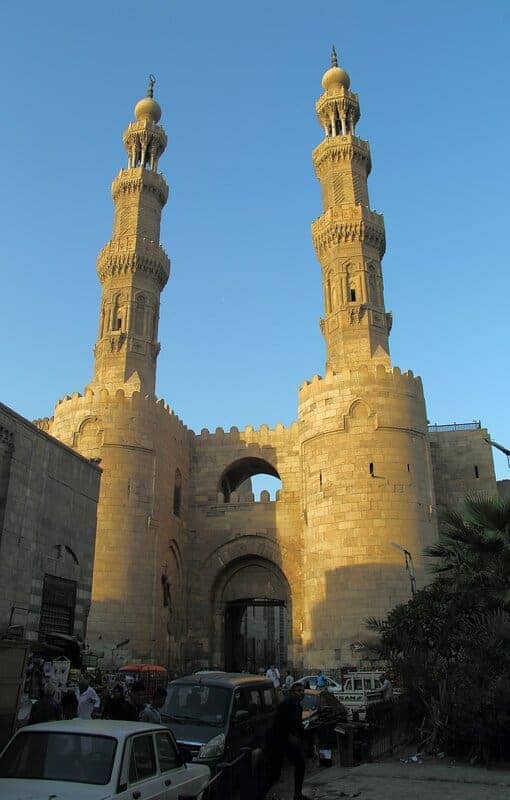
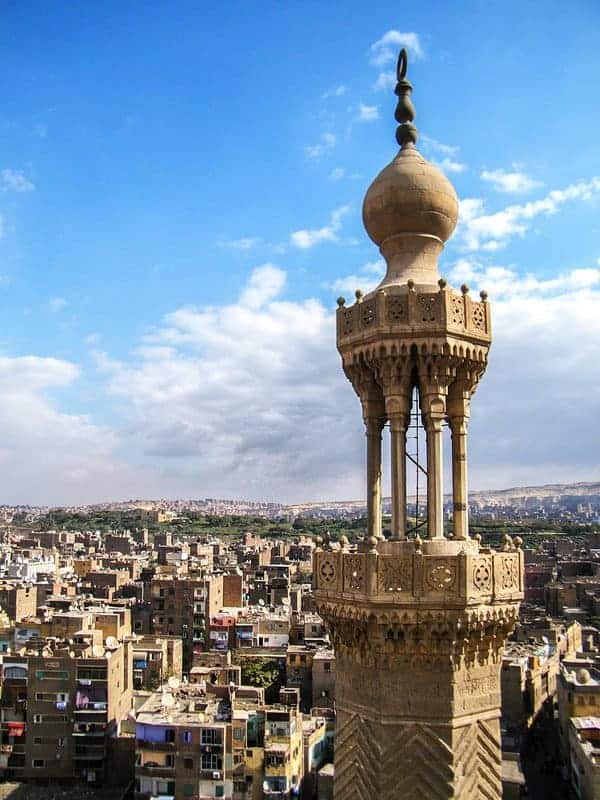
Named after the Berber tribe of Al-Zawila, Bab Zuweila is situated south of Cairo.
The southern part of Old Cairo extends from this gate until Al Khyiamia – Tentmakers Bazaar (home for tentmaking crafts).
According to history, this gate was also the primary platform for execution, hence why this gate is the least famous out of other gates in Old Cairo.
Vice versa, you can also start from Zuweila Gate, passing along Al Azhar Mosque, then going up north to Bab al Futuh. Regardless of whatever side you’re on, it doesn’t matter.
Muizz Street Restaurants
Some old cafes with a traditional ambiance surrounded by classic-looking street cafes are El-Fishawi and Om Kalthom.
Halal status: Most of the restaurants here are Halal. However, some do sell Hookah so this may be a concern for some. It is advisable to ask first, if you are unsure.
These restaurants and cafes have been around for centuries (some from the 16th century!), so enjoy, relax, and taste traditional Egyptian food while serenaded by Umm Kulthum songs!
Pro-tip: These cafes can be overpriced, as it is located in a touristy section. So ask for the price before buying!
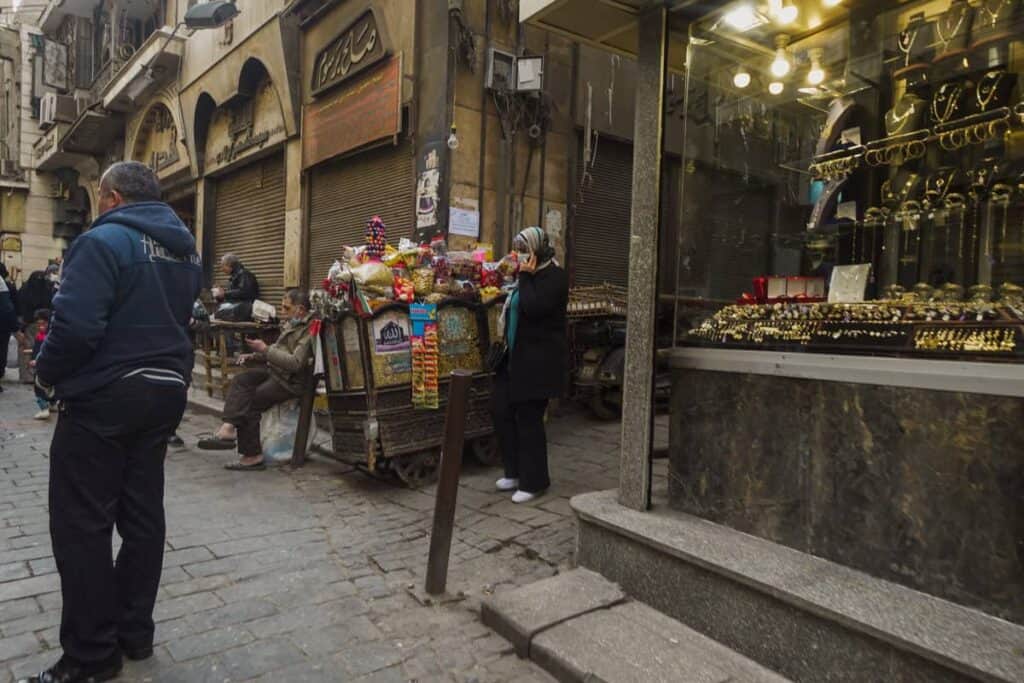
Map of Muizz Street Attractions
Visiting Muizz Street During Ramadhan
Evenings in Muizz Street is a whole different experience during the Holy month of Ramadhan!
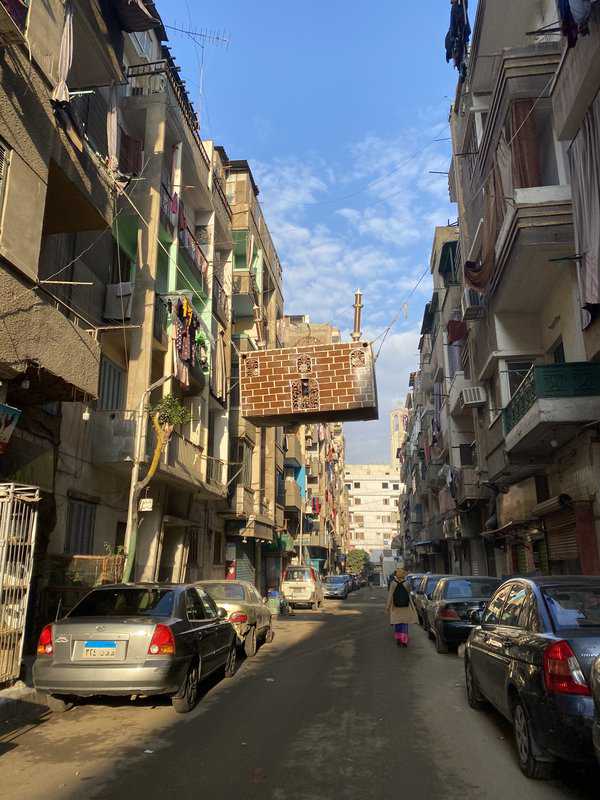
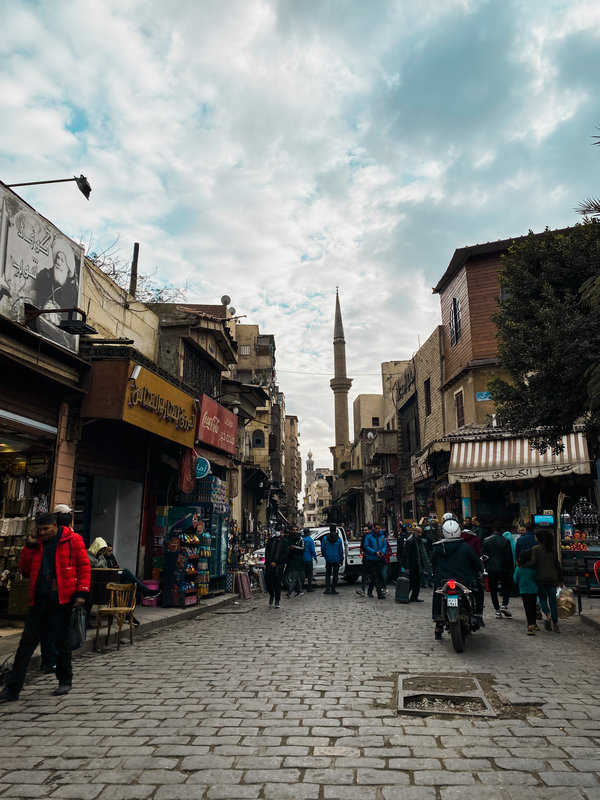
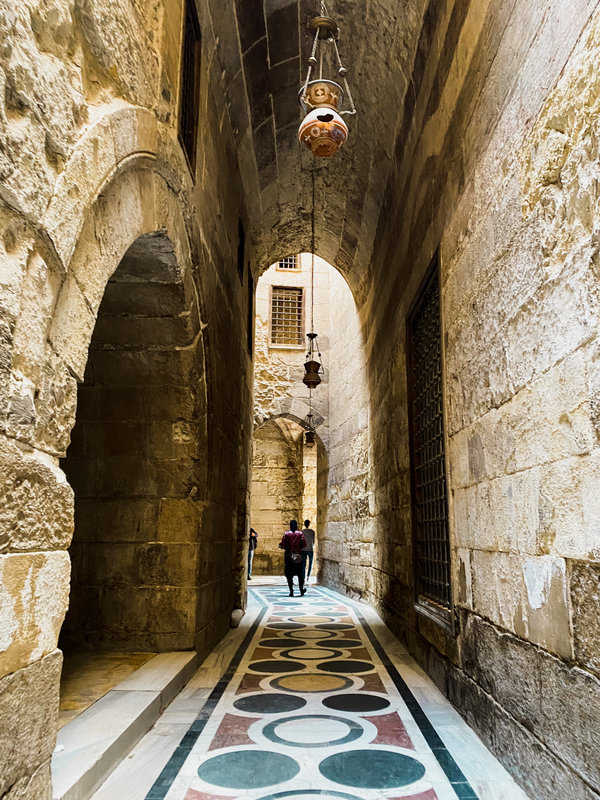
This is the perfect place to be during the fasting month as the street hosts Ramadhan Carnival, filling the streets with traditional percussion performances, tanoura dance, and other special activities.
At night, the streets light up with fanooz (lanterns) and banquets served during Iftaar (break fast during sunset).
It can get pretty crowded, so come early before Iftaar if you’d like to break your fast with the local people in Muizz street!
How to Get to Muizz Street
You can either walk, hop on the Metro, micro-buses or take a taxi that lets you drop off in front of the Gates (Zuweila, al-Futuh, or Al-Nasr). From there on, you can just walk along to any of the top attractions around!
Nearby metro stations to keep in mind are Ataba Station,
Pro-tip: Avoid hopping on the Metro during rush hour as it can get absolutely crowded!
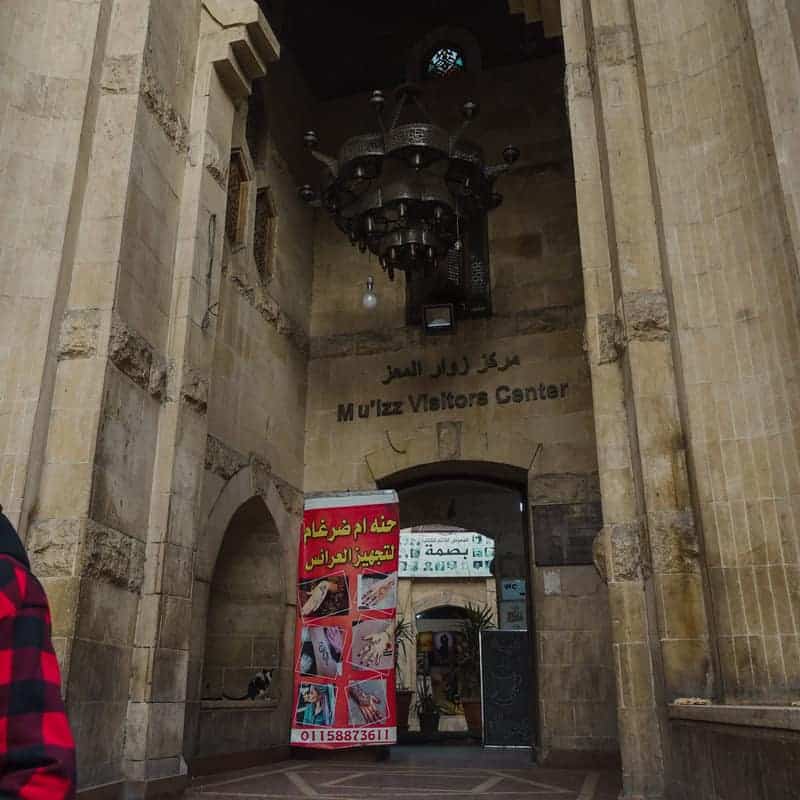
Muslim Solo Travel Tips For Visiting Muizz Street
Those who want to use their camera inside the monuments or historical buildings are either expected to pay the extra amount or aren’t permitted to do so without a valid permit.
A guided tour with a private Egyptologist would allow you to see the best of Muizz Street from the eyes of a local!
Carnivals take place in Muizz Street every once in a while.
Most attractions close by 3:00 pm, so come by early if you’re planning to visit any of these attractions.
While the above are some of the main attractions along Muizz Street, you’ll discover that there’s just so much more to do around as you explore the area!
Watch Muizz Street Walking Experience
Muslim Solo Travel Takeaway
A walking tour (self-guided or professionally guided) at Muizz Street makes a great Muslim-friendly Solo Travel activity!
Along the Muizz street, you’ll see traces of Arab heritage, particularly traditional Egyptian architecture and Islamic history that goes all the way to the Fatimid dynasty.
Not only you’ll get to discover the Islamic Civilization of Egypt and experience medieval Egypt, but also sample Halal Street Food around!
Related Egypt Muslim Solo Travel articles:
- Introductory Scuba Diving Experience in Hurghada, Egypt [REVIEW]
- Travel to the Pyramids of Giza (All You Need To Know & Muslim Solo Travel Tips!)
- Muslim-friendly guide to Hurghada Solo Travel [2022]
Follow Muslim Solo Travel on all its social media at:
